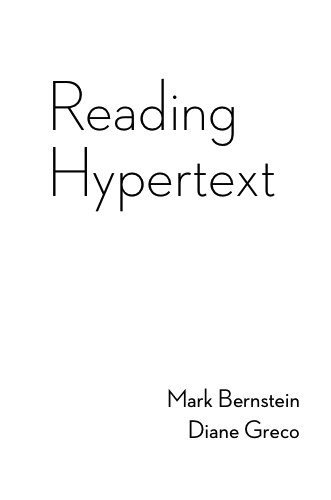Hypertext 2010
Stacey Mason

photo: Calum Tsang. Taken at the dinner cruise.
Eastgate returned from Hypertext 2010 in Toronto, exhausted but also encouraged by the interest in narratives in generative and locative systems.
Excellent talks included Charlie Hargood’s presentation of semiotic systems for generative narrative photo montages, Heiko Haller’s iMapping presentation, and James Goulding’s talk on transclusion and hypertext structures.
But the real standout session was an impromptu breakout session organized by Nate Matias on Monday afternoon to discuss narrative hypertexts and interesting games. Topics ranged from narrativist games like Sweet Agatha and Shadow Unit to using fictional Twitter accounts as a means to extend serial narratives that live on the Web and off. Sometimes using Twitter is just a marketing ploy, but what determines if this practice is working? The quality of the tweets? Is there credit to fictional characters offering completely mundane tweets? Is there really a difference in the fictional account used for marketing and the one used for content delivery?
We also discussed Jason Rohrer’s new Sleep is Death, an interesting two-player game that exists somewhere between the table-top RPG and improvisational narrative. One player acts as a game master to create a world and control NPCs while the other player interacts with the world. However, a 30 second time limit per turn prevents the type of planning that normally goes into a tabletop RPG, making the narrative more fluid and dynamic. The result is a game with considerable gameplay constraint that in many ways frees the narrative from the constraints of the gamemaster’s railroading. It’s also interesting that the low-tech graphics play a huge role in allowing enough ambiguity to call a small person either a baby, a child, a dwarf, a gnome, and so forth. This kind of inventive gameplay would not be possible with the dazzling graphics of current-generation systems.
The group also discussed the adaptation of print fiction to hypertext forms, focusing much attention on Sherlock Holmes adaptations and pastiches. Sherlock Holmes as a Hyperbook and a stretchtext were mentioned, as well as an adaptation of a half-finished story that was adapted as an interactive narrative . Here we see another example of constraining narrative operation allowing for freer story elements.
Though I do regret that certain panels were scheduled opposite each other, it was a good conference overall with wonderfully fascinating people. I can’t wait for next year in Eindhoven.
